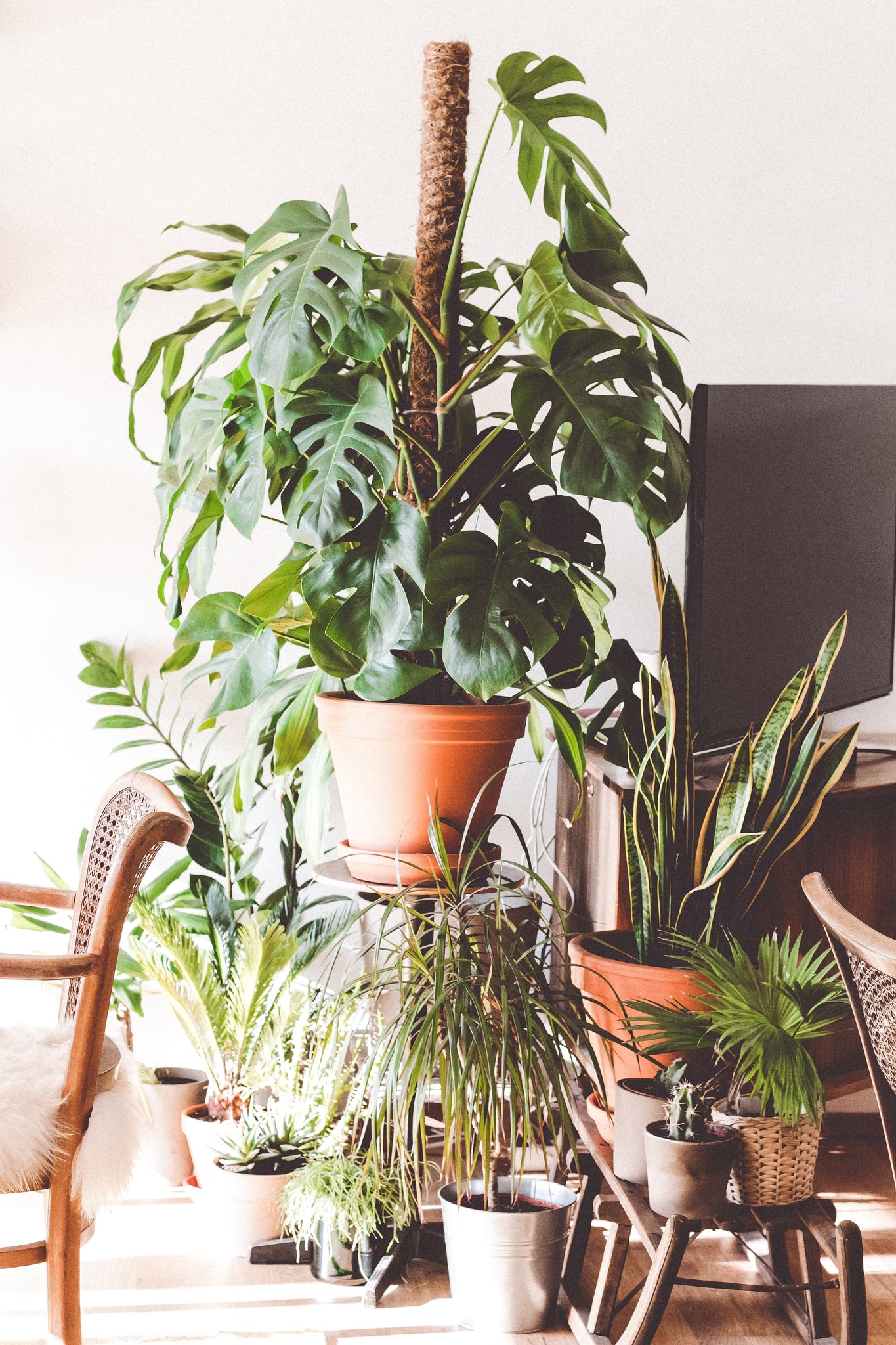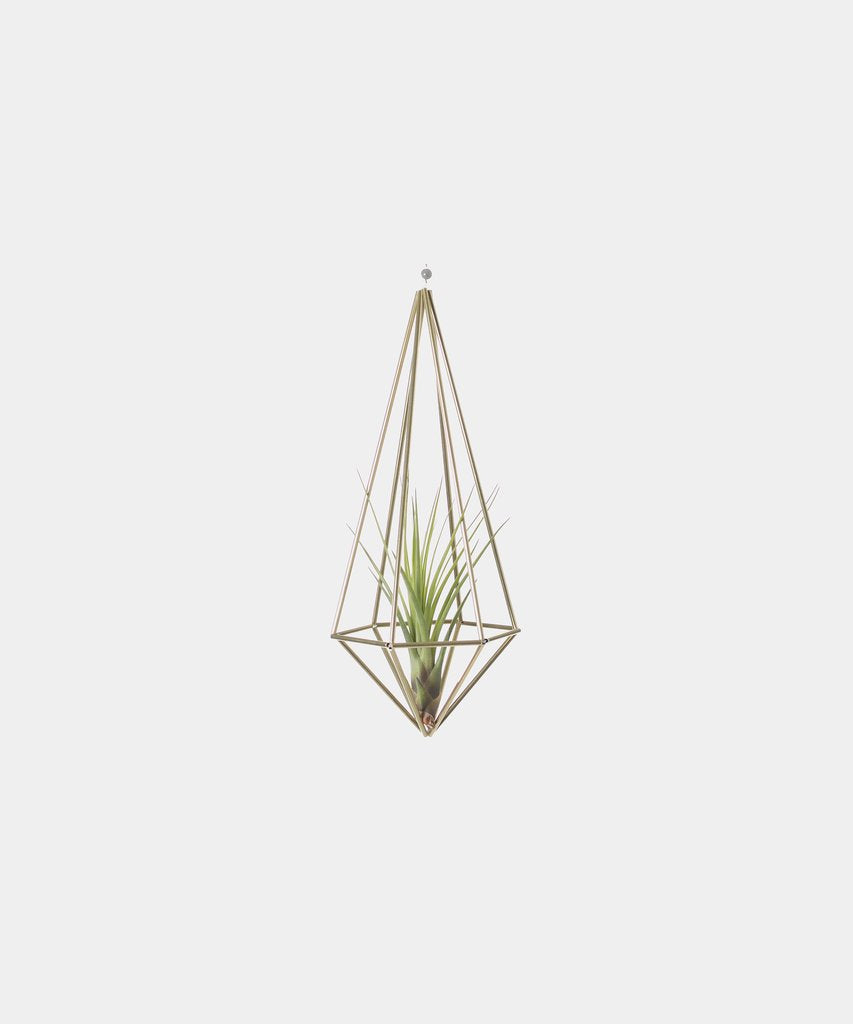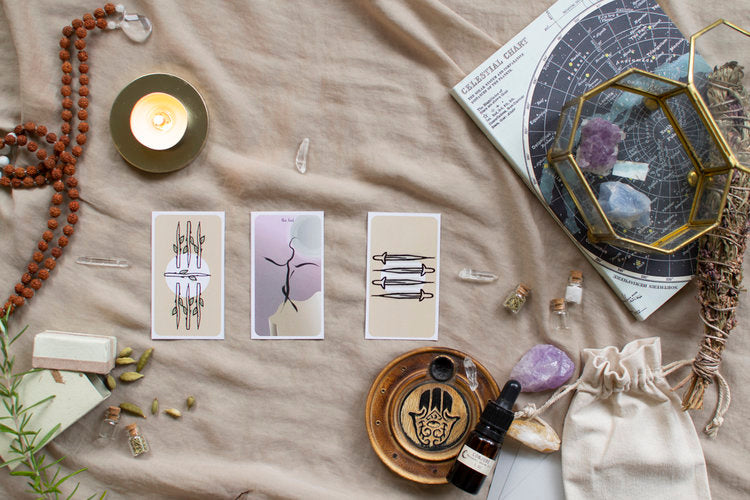
Plants help our planet breathe. Every day, they are taking in what we expel, and turning it into new air, new life. They create nutrients that sustain us. They give our landscapes colour, and variety, and create homes for our fauna. And, they create beauty beyond anything we as humans could manufacture. They are food, art, home, life - along with our great oceans, they are what makes our planet special. Why wouldn't we do all we can to take care of them?
Spring is all about plants and greenery and new growth. Blossoms, buds, foliage, tiny little sprouts emerging from the soil - so much newness! Doing our part to create green spaces is not only good for the Earth, but for our own health. Both outdoor and indoor plant tending creates better spaces for us to live. Indoor plants can help filter our air, lower our stress levels, and increase our productivity. So why don't we all have oodles of plants in our houses? One of the reasons could be that we aren't all skilled at caring for lush, living home decor.
Every one of us can't be blessed with the greenest of thumbs, so we asked our partner-in-plants, Sarah from Botanic Creative, to put together some pointers on how to care for your Houseplants. She is a wealth of knowledge in the world of leafy (and spiky) greens!
To get started, a few general tips on what you should be focusing on this time of year for your potted companions. Spring is time to:
- Repot your houseplants into larger containers (if needed)
- Divide larger houseplants into smaller ones (if needed)
- Top up the soil level on your houseplants. Fresh soil = happy plants
- Begin feeding your tropical house plants once every two weeks with a water soluble organic fertilizer (Sarah's favourite is Orgunique Houseplant Tropical 2-1-3)
- Prune off any dead or dying leaves and branches and prune to shape
- Give everyone a good dusting. Dust clogs the plant’s pores, making it difficult to respire.
All excellent tips and reminders to keep your natural air purifiers healthy. How about a few particulars though? Like humans, plants are not one-size-fits-all when it comes to care. They need the proper environment to thrive, which means you need to pay attention to the different requirements of each variety.
There are so many plants out there, we can't cover them all! We asked Sarah to break houseplant care down into some general categories with a focus on our top faves - Tropicals, Succulents & Cacti, and Air Plants. Below, you hear Sarah's top advice on how to care for these live decor options.
First thing is first:
LOCATION
"The thing I stress most about plant care: Consider where your plant’s native habitat is. Unsure? Google it. This will give you insight into what conditions it thrives in and you can endeavour to simulate this environment as much as possible. The golden rule: right plant in the right place. When choosing a plant, knowing where it is going to live is most important. Each plant will have specific light, water, temperature, and humidity requirements. Knowing these requirements and the direction your windows face will make your (and your plant's) life easier.

TROPICALS
NATIVE ENVIRONMENT | Lower canopy of the jungle. The light is typically filtered, indirect, or dappled. There is heavy rainfall in the late afternoon, misty mornings. High temperatures mid day to dry upper levels of soil, and then low nighttime temperatures.
LIGHT | Most will enjoy bright indirect light in close proximity to a window. Some varieties can tolerate lower light levels such as a Northern window or farther away from a light source. Some may need higher levels, particularly larger tree specimens such as the Ficus & Palm. Rotate plants regularly to ensure even growth. A daytime temperature between 18° to 24°C with a 3° to 5°C drop at night is comfortable for most. Some enjoy a summer holiday outside such as Citrus & Hibiscus, but make sure they are not in full sun all day. When temperatures drop below 15°C it's time to bring them inside. TIP: treat plants for disease/pests before bringing inside!
WATER | Most will need a thorough soaking, then let the top 3" (1" if the pot is < 6") of the soil dry out between watering. Soil will dry out slower in cooler months so water less. Push your finger down far into the soil to check for dampness. Soil will appear loose, powdery, and light in colour when dry. If there is mold on top, remove and let the top 4-6" dry out well. Most will enjoy between 50-60% humidity. In the winter, tropicals suffer from our warm, dry homes. Ways to increase humidity include: misting daily, a pebble tray, running a humidifier, grouping plants, and showers.
TIP: Most tropical plants love a good shower! The water running through the soil removes any mineral build up and the leaves appreciate the soak. This can be done in your shower or with the hose.

SUCCULENTS & CACTI
TIP: 'Succulent' is an umbrella term for any plant that collects and stores water. Cacti are in fact succulents, but are defined by the presence of 'areoles', the cushion-like mounds where spines come out.
NATIVE ENVIRONMENT | Sub-desert environments complete with shrubs and trees to provide protection from the intense afternoon sun. Hot dry summers with either intermittent rainy periods or a significant rainy season. Most cactus species will thrive in full sun.
LIGHT | Most succulents will want as much bright light as possible, however some varieties will actually burn in direct sun such as Haworthia and Aloe. Cacti prefer full sun, but can tolerate lower levels, however growth will be stunted. Rotate plants regularly for even growth. Varieties such as Sempervivum and some Sedums are winter hardy on our West Coast, but most succulents cannot tolerate temperatures lower than 15°C. Some varieties, such as Kalanchoe and Aloe will go dormant in the intense heat of summer and others, such as Euphorbia and Agave go dormant in the cooler months.
TIP: If you like to put your succulents outside for the summer months, be sure to acclimatize them to full sun. Keep them out of the hot afternoon sun before slowly introducing them to more light. Treat for pests and disease before bringing back inside.
WATER | The golden rule: saturate soil evenly and thoroughly, drain out any excess water, and repeat as soon as the soil is completely dry. For cacti, same technique just let the soil stay dry for about 2-3 weeks. In the summer you may be watering up to once every 2 days depending on heat, pot size, soil quality and the plant! In the cooler months make sure the soil is absolutely dry before watering.

AIR PLANTS
NATIVE ENVIRONMENT | These guys are found in Central/South America and some parts of the Southern United States. They are epiphytic, meaning rather than growing in soil on the ground, they attach themselves (of a non-parasitic nature) to larger trees and structures where they absorb most of their nutrients and moisture via their external fronds. Sunlight is typically filtered through the canopy.
LIGHT | They prefer bright indirect light, keep out of direct afternoon sun. They do not survive in artificial light ie: your bathroom with no windows.
WATER | Gather up all your Air Plants and soak them (pool party!) in your sink or a bowl of tepid water once/week for 20 minutes. Remove and rigorously shake out excess water and place upside down to dry for the day. Air Plants absorb moisture best in the morning, so I usually soak in the morning, place upside down for the day, come home from work and put them back in their homes. In addition to soaking, you can mist with water as often as you can remember!
TIP: These little guys grow in length and diameter as they age. Once they feel life has run its course, they will push out an exotic flower which will last for months. Once this flower fades the mother plant will begin to push out ‘pup’, or smaller versions of herself. Keep the pups attached to the mother plant until they are 1⁄4 of her size, then remove. The mother plant will continue dying. This whole process can take up to 1 year!"

That's the basics! For extra tips on drainage, fertilizer, propagation, and any other plant species you may be wondering about, Botanic Creative is a great resource. Check out Sarah's Workshop page to learn about the different topics she is available to teach you about. We have had her lead sessions in the store before and it is a blast!
Find your next tropical, succulent, cacti, or air plant in both of SALT's locations, provided by Sarah, cared for by our (now) well-educated team!
from SALT Shop - Journal https://saltshop.ca/blogs/news/houseplant-care








